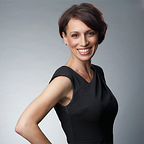The Allbound Podcast: Social Selling in Today’s Sales Environment
Jill Rowley, social selling evangelist, was my guest on The Allbound Podcast where we discussed the evolution of sales and the big changes coming down the pike.
Want to listen? Subscribe on iTunes here.
What do you do as a social selling evangelist?
I didn’t start as a social selling evangelist. I tell people I’m a sales professional trapped in a marketer’s body. I spent two years at Salesforce, and then a decade on quota at Eloqua, and my buyer was marketing. It was about 2012 when I started to develop this reputation for what we were defining as “social selling.” I didn’t know it was a thing, I was just using social networks like Linkedin and Twitter to be where my buyers were and find out information about those buyers.
I wanted to understand the world of my buyers. If I was going to be teaching them that they should be using this channel in marketing programs, I needed to understand it, and for me to understand it, I needed to use it. So it just became part of my toolkit as a sales professional.
How has the landscape changed since you were in that sales role, leveraging social media platforms to help you drive your sales process?
We’re using these social networks to do research on the buyer, the buying committee and the sphere of influence of the buyer. The thing about social selling that has me worried is people thinking it’s just a new technique, or just a new tactic or tool, because it’s so much more than that. Sales transformation is what needs to be occurring much more broadly than social selling. The reason is the buyer has changed more in the past 10 years than the past 100 years. Marketing has been evolving, but sales hasn’t. No one really likes to buy product and we don’t even really want to buy solutions. We want outcomes.
What impact do you think outsourced marketing and social automation have had on sales and marketing?
I recently had a call with an amazing company that is approaching $10B revenue, and I was speaking with the leader of the inbound SDR team. He said their playbook is a 10-year-old playbook, and it includes that every inbound gets 10 touches. Five calls, five emails. Every software company on the planet it seems, is running the same playbook, and so you have millions of salespeople making millions of calls, and sending millions of emails. More isn’t better, more relevant is better. One of the things we teach is incorporating social into your mix.
So with this gentleman, I sent him a personal invite to connect on Linkedin, I followed him on Twitter. I retweeted something he tweeted, and he had shared a post on Linkedin, and I had commented on it. So when I sent him an email, I referenced the post that he had shared on Linkedin. I’d already made a pretty significant impression on him, because I had done research to be relevant, to build a relationship. But social is fluid. It is really difficult for sales leaders to wrap their heads around the fact that it isn’t a channel that can be outsourced or automated. It has to be a behavior that’s taught. There’s fluidity, not rigidity, in social.
What should sales and marketing professionals be doing to better serve their buyers?
How do you understand what’s relevant and what will resonate with those contacts in those specific accounts? How do you do personalized messaging and content? How do you orchestrate all that? This is a more educational approach to marketing, and it’s helpful to the buyers. It’s a lot of leading with the customers’ stories. I don’t want to buy a product, I don’t want to buy a solution, I want outcomes. I want to see people like me in the same job role, at a similarly sized company, in a similar industry doing what you’re telling me I need to do with your product.
Where do you see the B2B sales profession headed in the next two years?
I think a lot more will be demanded of the sales professional. For a buyer to be willing to engage with a sales professional, there’s going to have to be way more value exchange, and a whole lot more value exchange up front for them to invest any of their time.
The modern seller needs to be able to communicate very effectively because she’s going to have to get a group of people on a buying committee from cross functions to collaborate internally and reach consensus. Beyond that she has to think ecosystem, and how her solution fits into the overall ecosystem of the customer’s world. She’s got to be tech savvy and social oriented. It’s frightening how little sales leaders are doing today to prepare their sales organization to sell the way that customers want to buy.
Download this episode to hear what Jill says about how sales professionals should be using social tools to better understand their buyers, and how to avoid a lead slipping through the cracks.
I originally posted this on October 26, 2016 here.
Jen Spencer is the Vice President of Sales and Marketing for Allbound, a SaaS platform that helps companies empower their resellers and distributors to be more customer-focused through content and collaboration. Jen loves animals, technology, the arts, and really good Scotch. You can follow her on Twitter @jenspencer.
